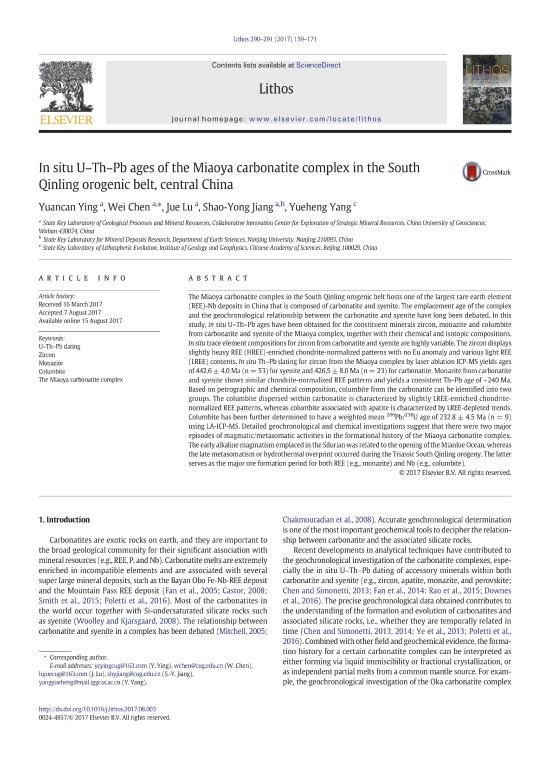

Yuancan Yinga, In situ U–Th–Pb ages of the Miaoya carbonatite complex in the South Qinling orogenic belt, central China
The Miaoya carbonatite complex in the South Qinling orogenic belt hosts one of the largest rare earth element (REE)-Nb deposits in China that is composed of carbonatite and syenite. The emplacement age of the complex and the geochronological relationship between the carbonatite and syenite have long been debated. In this study, in situ U–Th–Pb ages have been obtained for the constituent minerals zircon, monazite and columbite from carbonatite and syenite of the Miaoya complex, together with their chemical and isotopic compositions. In situ trace element compositions for zircon from carbonatite and syenite are highly variable. The zircon displays slightly heavy REE (HREE)-enriched chondrite-normalized patterns with no Eu anomaly and various light REE (LREE) contents. In situ Th–Pb dating for zircon from the Miaoya complex by laser ablation ICP-MS yields ages of 442.6 ± 4.0 Ma (n = 53) for syenite and 426.5 ± 8.0 Ma (n = 23) for carbonatite. Monazite from carbonatite and syenite shows similar chondrite-normalized REE patterns and yields a consistent Th–Pb age of ~240 Ma. Based on petrographic and chemical composition, columbite from the carbonatite can be identified into two groups. The columbite dispersed within carbonatite is characterized by slightly LREE-enriched chondritenormalized REE patterns, whereas columbite associated with apatite is characterized by LREE-depleted trends. Columbite has been further determined to have a weighted mean 206Pb/238U age of 232.8 ± 4.5 Ma (n = 9) using LA-ICP-MS. Detailed geochronological and chemical investigations suggest that there were two major episodes of magmatic/metasomatic activities in the formational history of the Miaoya carbonatite complex. The early alkaline magmatism emplaced in the Silurian was related to the opening of the Mianlue Ocean, whereas the late metasomatism or hydrothermal overprint occurred during the Triassic South Qinling orogeny. The latter serves as the major ore formation period for both REE (e.g., monazite) and Nb (e.g., columbite).
